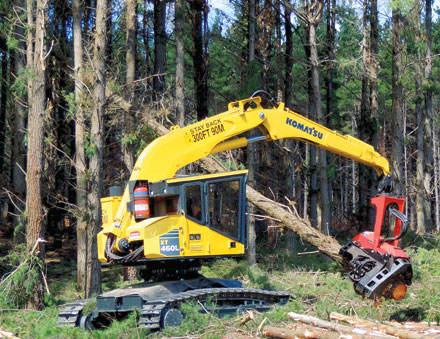
Growing up in the ’90s, we were told that using too much paper was killing trees and, well, who wants to be a tree killer? From this perspective, it seems that we are better off embracing the digital era; books and notepads ought to be a thing of the past, replaced by laptops and tablets—but, when taking a closer look, it’s not so cut-and dried. Source: Packaging Digest
When done responsibly, forestry and paper production can actually help save trees and play an important role in sustainability.
Let’s consider a practical example: Imagine there’s a local timber company where you live, and it has managed forest stands in the area responsibly for decades.
Over the years, paper sales decline and the company slowly loses business, it is eventually forced to close and sell off its land.
A local dairy farmer looking to expand business purchases the property and converts it into pasture. A couple years down the road, the area is covered in cattle and grass, without a tree in sight.
Not only is carbon no longer sequestered in the forest but methane gas now pollutes the air.
This hypothetical situation is an ever increasing reality in the 21st century. Indeed, the culprit behind deforestation is often not papermaking, but land-use change.
So, what does this mean and why does it matter?
First off, it means that we need to move past the days of equating paper products with killing trees, and it matters because when we understand an issue, we can make an informed decision.
We know that paper products and sustainable forest management are fundamental to protecting forests from land-use change, but we also know that we can’t clear-cut vast swaths of forest and pretend that’s a responsible management practice. Instead, we need to be equipped with the knowledge of how to identify and purchase paper products from responsible sources.
One of today’s trending topics in sustainable business is transparency.
After decades of eroding consumer confidence in corporations, it is no longer acceptable for businesses to make baseless claims about the quality, safety and origin of products.
Consumers are demanding more transparency in supply chains; they don’t just want to know you make a quality product, they want to know you make a quality product with quality components. They want to know where the product comes from and how it was produced.
These types of questions are reshaping the way that businesses interact with their customers and one of the outcomes of this has been the proliferation of supply chain transparency tools across all sectors.
In the forest sector, conversations around transparency have helped facilitate the development of forest certification programs, such as the Forest Stewardship Council (FSC), the Sustainable Forestry Initiative (SFI), the American Tree Farm System (ATFS), the Programme for the Endorsement of Forest Certification (PEFC) and many others.
These programs have fostered sustainable forest management practices and increased transparency in supply chains. In recent years, additional tools have been developed to further enhance the transparency of forest products, specifically related to paper products.
One example is the Environmental Paper Assessment Tool or EPAT, which is an innovative platform for buyers and suppliers of paper products to share supply chain information on environmental performance.
More than just a transparency tool, EPAT is stimulating and facilitating discussions on sustainable paper procurement between industry leaders.
With the emergence of these kinds of tools, transparency is becoming an integral part of business operations and its importance will only continue to increase in the future.





